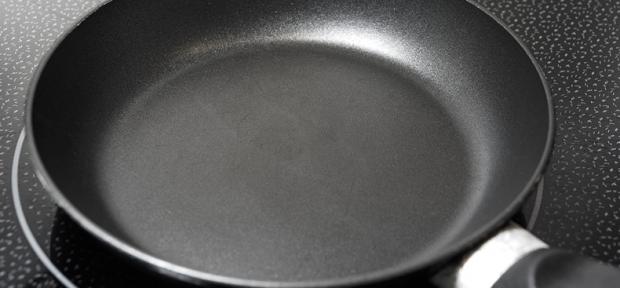
Breaking News
 "They are ALL dead... 1.8 Million of them killed in Ukraine" Col. Douglas MacGregor | Reda
"They are ALL dead... 1.8 Million of them killed in Ukraine" Col. Douglas MacGregor | Reda
 Hospital food proven bad scientifically – and may undermine health
Hospital food proven bad scientifically – and may undermine health
 Electron beam solves Teflon trash problem with super-efficient zaps
Electron beam solves Teflon trash problem with super-efficient zaps
 Sam Altman Again Claims AGI is Solved and Huge Norway and Other Data Center for Superintelligence
Sam Altman Again Claims AGI is Solved and Huge Norway and Other Data Center for Superintelligence
Top Tech News
 The mitochondria are more than just the "powerhouse of the cell" – they initiate immune...
The mitochondria are more than just the "powerhouse of the cell" – they initiate immune...
 Historic Aviation Engine Advance to Unlock Hypersonic Mach 10 Planes
Historic Aviation Engine Advance to Unlock Hypersonic Mach 10 Planes
 OpenAI CEO Sam Altman Pitches Eyeball-Scanning World ID to Bankers
OpenAI CEO Sam Altman Pitches Eyeball-Scanning World ID to Bankers
 New 3D-printed titanium alloy is stronger and cheaper than ever before
New 3D-printed titanium alloy is stronger and cheaper than ever before
 What is Unitree's new $6,000 humanoid robot good for?
What is Unitree's new $6,000 humanoid robot good for?
 "No CGI, No AI, Pure Engineering": Watch Raw Footage Of 'Star Wars'-Style Speeder
"No CGI, No AI, Pure Engineering": Watch Raw Footage Of 'Star Wars'-Style Speeder
 NASA's X-59 'quiet' supersonic jet rolls out for its 1st test drive (video)
NASA's X-59 'quiet' supersonic jet rolls out for its 1st test drive (video)
 Hypersonic SABRE engine reignited in Invictus Mach 5 spaceplane
Hypersonic SABRE engine reignited in Invictus Mach 5 spaceplane
 "World's most power dense" electric motor obliterates the field
"World's most power dense" electric motor obliterates the field
 The Wearables Trap: How the Government Plans to Monitor, Score, and Control You
The Wearables Trap: How the Government Plans to Monitor, Score, and Control You
Electron beam solves Teflon trash problem with super-efficient zaps

However, a new recycling technique developed by Japan's National Institutes for Quantum Science and Technology (QST) promises 100% effectiveness.
Teflon is one of science's wonderful examples of serendipity. In April 1938, DuPont chemist Roy J. Plunkett was working on a new, safer chlorofluorocarbon refrigerant that wasn't explosive or poisonous like the ones used in then-current refrigerators.
He was mucking about with tetrafluoroethylene (TFE) gas mixed with hydrochloric acid to see how they'd react when he discovered that one cylinder that had been stored on dry ice seemed to be empty, though it still weighed as much as if it was full. Cutting it open, he found a slippery white powder that turned out to be the TFE spontaneously polymerized, turning it into polytetrafluoroethylene (PTFE).
What we now know under its trade name, Teflon.
At first, the expensive-to-produce chemical was strange, but no one could figure out what to do with it. It was fantastically inert from a chemical point of view. Nothing could dissolve or degrade it. It didn't interact with living tissue. Water and oil, in fact almost nothing, would stick to it, with liquids beading up and running off. It was also nearly frictionless, maintained its chemical and physical properties over a wide range of temperatures, was an excellent electrical insulator, wouldn't burn, and it was durable and flexible.
It was the classic case of a solution in search of a problem.
Teflon probably would have ended up on a DuPont lab shelf and remained an obscure entry in the Handbook of Chemistry and Physics if it hadn't been for the Manhattan Project to build the first atomic bomb. Long story short, the scientists at Oak Ridge tasked with refining the uranium needed for the bomb were having problems with the highly corrosive uranium hexafluoride used to separate the uranium isotopes.
For reasons that are still largely classified, what was still called polytetrafluoroethylene was just the ticket for protecting valves, pipes, and other equipment while keeping them free from residue. So, the strange powder got a chemical foot in the door.
By the 1950s, Teflon had its official name and was finding all sorts of applications in chemical works, electronics, engineering, and other applications. It ended up being used in food processing, wire insulation, circuit boards, bearings, bushes, seals, valves, catheters, capacitors, buildings, textiles, and aircraft components.
Then, in the early 1960s, it burst onto the consumer market with the first non-stick frying pans, which became extraordinarily popular despite their tendency to scratch if you looked at them wrong and the aluminum in the pans being rubbish for heat retention, but that's just the opinion of someone who much prefers seasoned cast iron. A lot.
This chemical success story is all well and good and we could end it there if it weren't for one nagging problem. The very properties that make Teflon a miracle plastic also make it incredibly difficult to recycle. In fact, most recycling programs won't take Teflon pans and they end up in landfills.



